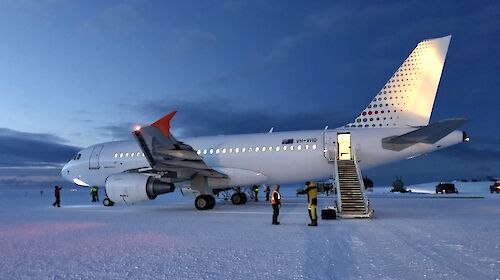The three kilometre runway shifts from being a straight line to a banana-like curve over winter as the glacier moves and is barely visible under the snow.
It is aviation operations lead Aaron Read’s job to make sure it is surveyed, realigned, strength-tested and ready to go by the time the first plane arrives in October.
“Every year varies but usually there’s usually about 100 mm to half a metre of snow covering about 60 per cent of the runway and this year was a typical year,” he said.
“Last year wasn’t. There was very high snowfall and we’re still dealing with that.”
Snow clearing usually takes three to four weeks and then proof-testing begins.







